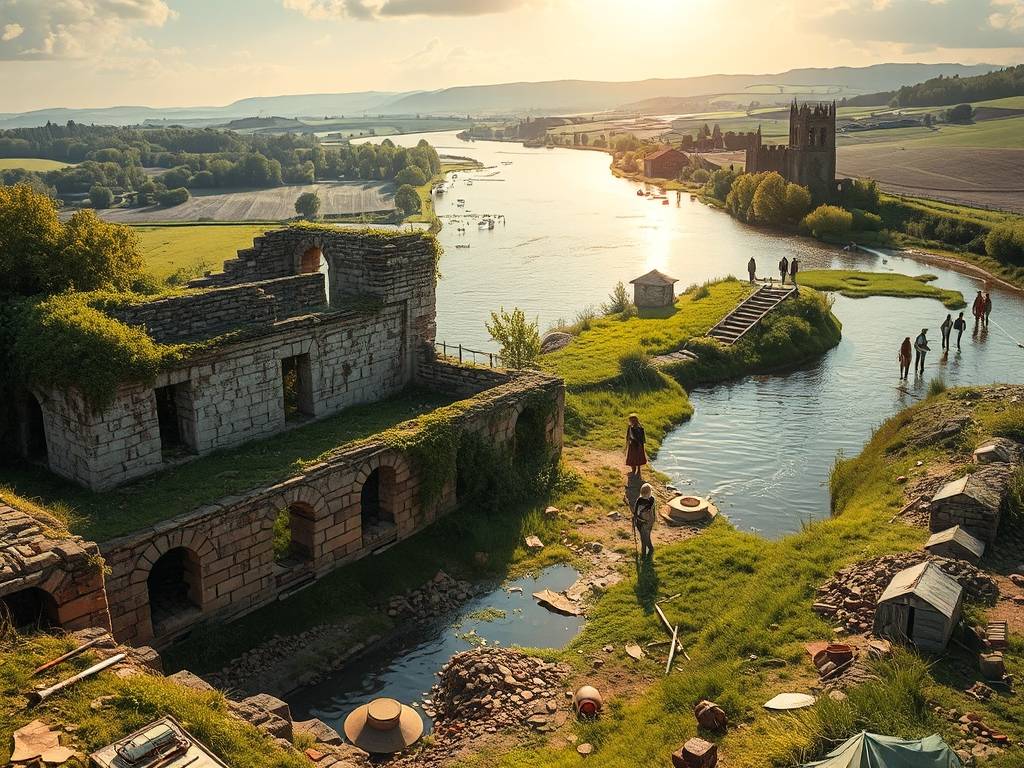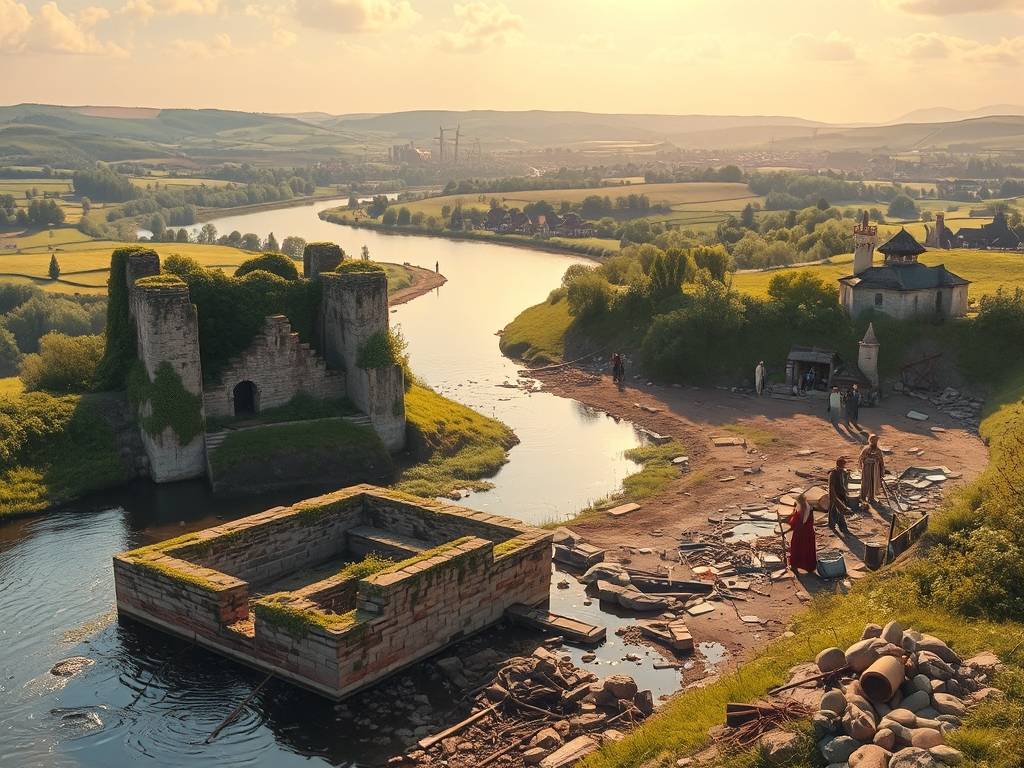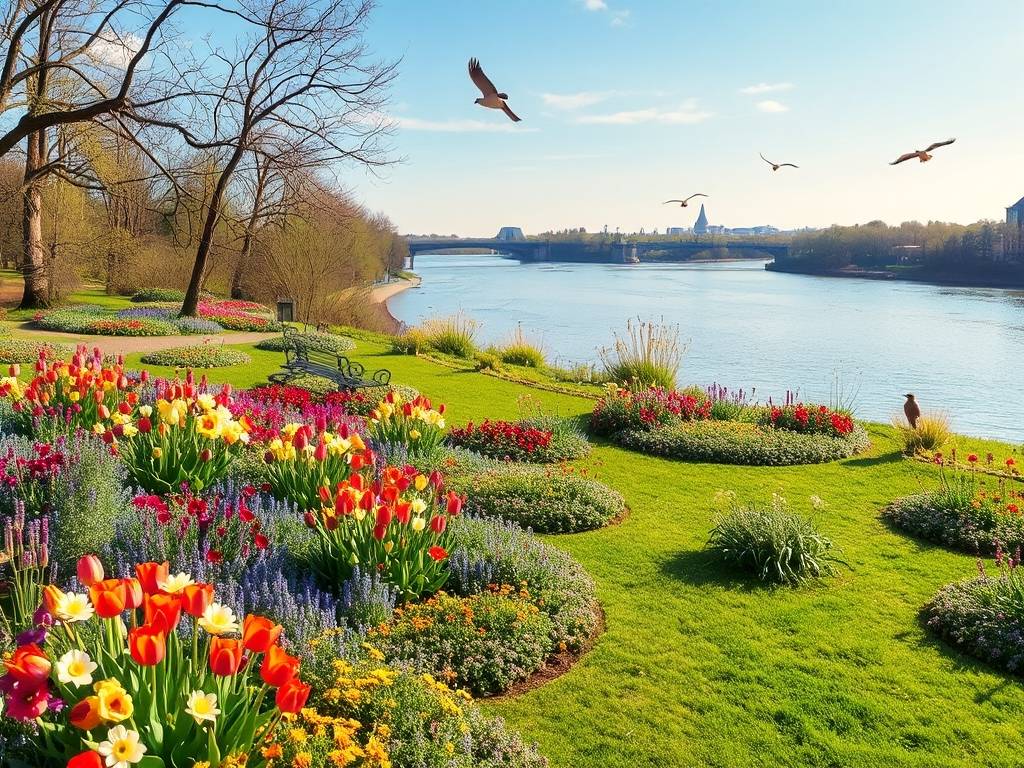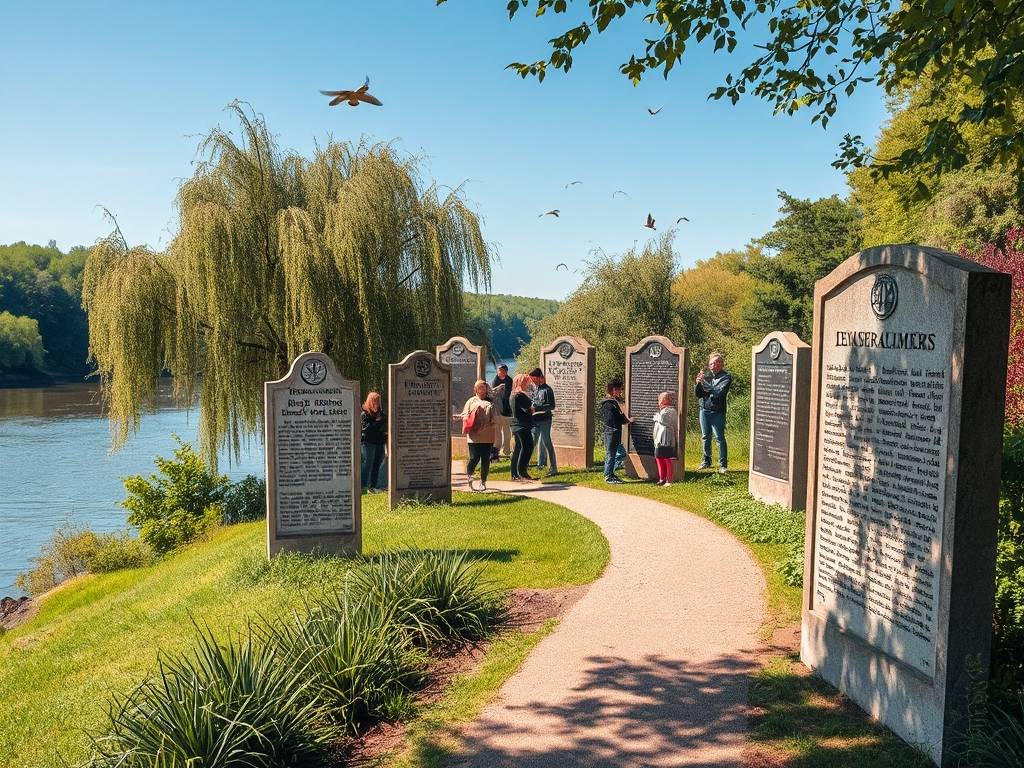Global Travel Information
Elbe River Archaeological Sites: Ancient Finds Near the Water
The Elbe River: Europe's Liquid Archive Unearthed
For thousands of years, the Elbe River has been more than just a body of water winding its way from the Czech Republic through Germany to the North Sea. It has been a life-giver, a highway, a border, and a sacred threshold. Today, its greatest role is that of a storyteller. The archaeological discoveries along the Elbe River are quietly revolutionizing our understanding of ancient Europe, offering a continuous narrative of human settlement that is unparalleled in the region. From the first hunter-gatherers who camped on its banks to the sophisticated societies of the Middle Ages, the river has preserved their secrets in the mud, sand, and peat.
The magic of the Elbe as an archaeological site lies in its unique conditions. Waterlogged, airless environments, known as anaerobic conditions, are a time capsule's dream. Organic materials that would normally decay in a matter of years—wood, leather, textiles, even food—can survive for millennia. This means that the ancient settlements near the Elbe River are not just revealed by stone tools and pottery shards, but by entire wooden houses, intricate wooden carvings, and the very seeds our ancestors planted. This level of preservation provides a stunningly complete picture of daily life, something dry-land sites can only hint at.

Our journey begins in the deep past, with the Mesolithic hunter-fisher-gatherers. Sites like the one at Friesack in Brandenburg have yielded an incredible array of finds, preserved in the boggy ground. Here, archaeologists uncovered not just flint tools, but bone and antler implements, fishing spears, and even remnants of nets and ropes. These finds tell a story of a people intimately connected to the river's rhythm, whose survival and culture were dictated by the migration of fish and the abundance of waterfowl. It was these rich resources that first encouraged semi-permanent settlement, laying the groundwork for everything that followed.
The real transformation came with the Neolithic Revolution, the dawn of farming. The fertile loess soils deposited by the Elbe over millennia created an irresistible lure for Europe's first farmers. One of the most significant testaments to this era is the discovery of a Neolithic wooden well near the Elbe, a stunning piece of engineering made from intricately carved oak timbers. This well does more than just demonstrate woodworking skill; it signifies a profound shift. It represents a community investing in a fixed location, modifying its landscape, and securing a permanent water source independent of the river's fluctuations. This was the foundation of settled society.
As we move into the Bronze and Iron Ages, the societies along the Elbe became more complex and stratified. The river served as a major trade corridor, part of the famed Amber Road that connected the Baltic Sea to the Mediterranean. Evidence of this trade is found in the rich burials of the Únětice culture, where bronze artifacts and amber beads testify to wealth and far-reaching connections. The river was their internet, a liquid network for the exchange of goods, ideas, and technologies.
Perhaps the most dramatic and illuminating chapters come from the Roman Iron Age and the era of Migration Period tribes. It was here, in the lower reaches of the river, that the Roman historian Tacitus placed the border between the Roman Empire and the wild, unconquered lands of Germania. The Elbe was the frontier. Recent underwater archaeology in the Elbe River has begun to uncover physical evidence of this liminal space. The most spectacular finds are from the site of a presumed battle at the Harzhorn, where Roman military equipment has been found far north of the accepted imperial border, challenging the simple narrative of a static frontier.
However, the true crown jewels of Elbe archaeology are the Slavic fortresses. From the 7th century AD onwards, West Slavic tribes, known as the Polabian Slavs, built a dense network of impressive ring fortresses along the river. These sites, like those at Lenzen and Groß Raden, are marvels of early medieval engineering. At Groß Raden in Mecklenburg-Vorpommern, a reconstructed temple and settlement stand today on the original site, built on an island in a lake. The waterlogged conditions preserved the wooden palisades, house posts, and a wealth of everyday objects, providing an unprecedented window into the world of these early Slavs—their architecture, their craftsmanship, and their spiritual beliefs centered around deities like Svantevit.
The importance of these Slavic fortifications along the Elbe cannot be overstated. They represent a powerful, organized society that controlled the river for centuries. The artifacts found within—from fine jewelry to agricultural tools—paint a picture of a thriving, self-sufficient culture that was deeply integrated into the wider European world through trade and conflict. Excavating these sites is crucial for understanding the ethnic and political landscape of early medieval Europe before the German eastward expansion, or Ostsiedlung.

The story continues into the High Middle Ages, with the rise of powerful trading cities like Hamburg and Magdeburg. The foundations of their wealth are literally buried in the river mud. Urban archaeology in these cities constantly unearths medieval wharves, shipwrecks, and countless lost or discarded items that washed into the river. Every piece of timber from a Hanseatic cog, every leather shoe, and every merchant's seal pulled from the Elbe's bed adds another sentence to the story of commerce, urban life, and the river's enduring role as an economic engine.
Modern archaeology on the Elbe is a multidisciplinary effort. It's not just about trowels and brushes. Scientists use dendrochronology to date wooden structures to the exact year by analyzing tree rings. Pollen analysis from core samples tells us about the ancient climate and what crops were grown. Geomorphologists study how the river's course has changed over time, explaining why a former settlement now lies buried deep under a field. This holistic approach ensures that the history of human habitation on the Elbe is told with as much scientific accuracy and detail as possible.
In conclusion, the Elbe River is a dynamic, flowing archive. Its archaeological treasures from the Elbe basin are not isolated curiosities but interconnected pieces of a grand historical puzzle. Each discovery, from a Mesolithic fishing hook to the timbers of a Slavic fortress, adds depth and color to our shared human story. They remind us that this great river has always been a place of convergence—of people, of ideas, and of ways of life. By continuing to explore its hidden depths and water-logged shores, we do more than just uncover the past; we learn about the resilience, ingenuity, and interconnectedness that have shaped our world, lessons that continue to flow as strongly as the river itself.
相关文章
- Elbe River Film Locations: Movies Shot Along the River
- Elbe River Historical Markers: Learn About Local History
- Elbe River Botanical Gardens: Flowers & Plants Along the Banks
- Elbe River Zoos & Aquariums: Family Fun Near the River
- Elbe River Amusement Parks: Rides with River Views
- Elbe River Camping Spots: Pitch a Tent by the Water
- Elbe River Glamping Sites: Luxury Camping Along the Banks
- Elbe River RV Parks: Stay in Your Camper Near the River
- Elbe River B&Bs: Cozy Accommodations with a Personal Touch
- Elbe River Hostels: Budget Stays for Young Travelers
发表评论
评论列表
- 这篇文章还没有收到评论,赶紧来抢沙发吧~


